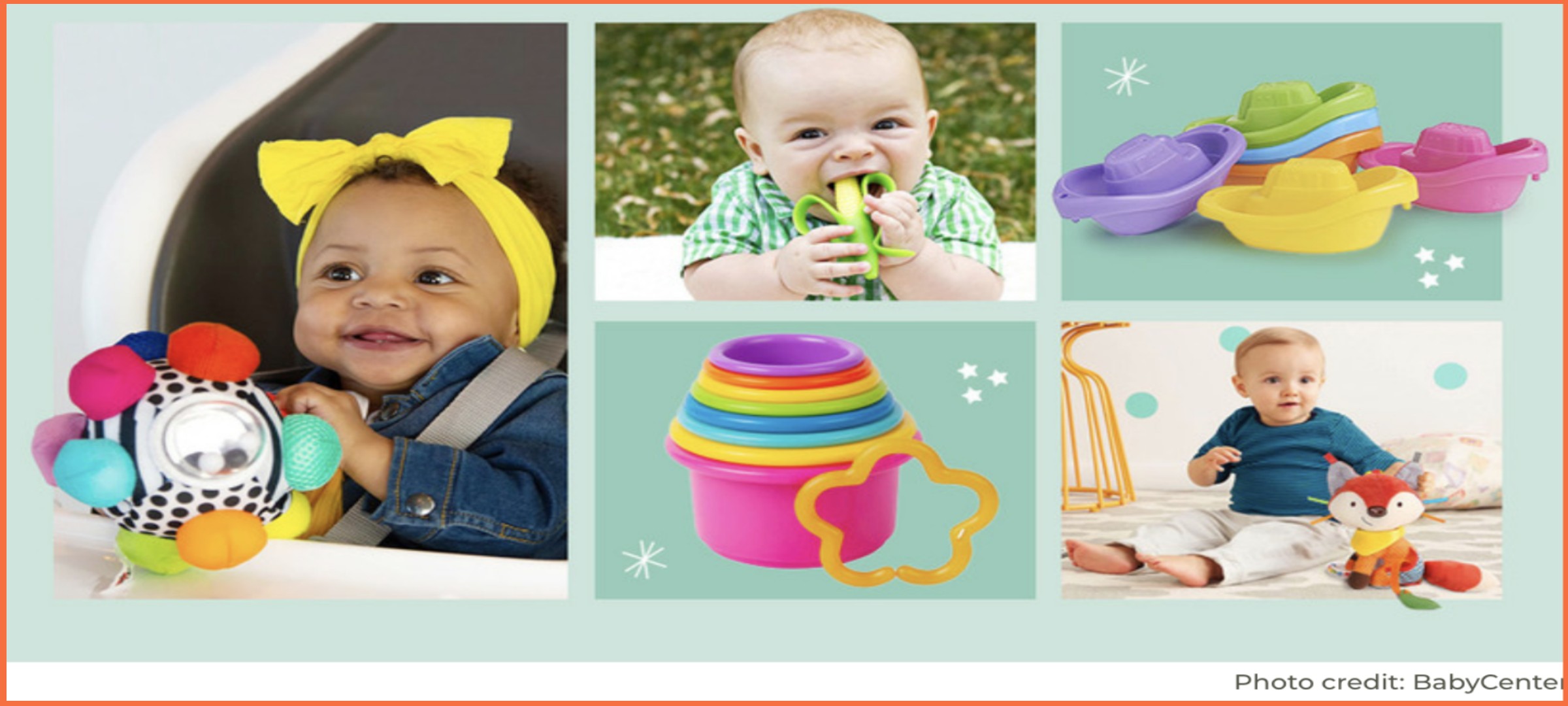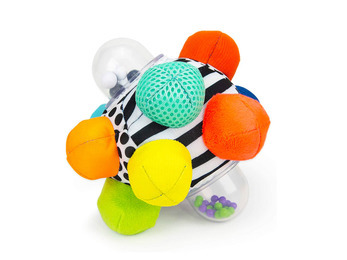
It may look relaxed and playful, but your baby's actually accomplishing important work. The American Academy of Pediatrics (AAP) says regular playtime is integral to children's health and development. “It’s the most important work of babies. It allows them to interact and learn about their world and be curious,” says Phil Boucher, M.D., a Lincoln, Nebraska pediatrician (and father of six)
Between 6 and 9 months, babies are mastering object permanence, practicing the range of their voices, copying sounds, and working on scooting and crawling, says San Francisco pediatrician Kathryn Meier, M.D. They’re also continuing to sharpen their hand-eye coordination and fine and gross motor skills. Toys that make noise or invite communication, are fun to mouth or chew, or encourage the use of large muscles are all great options. And so below you'll find toys that encourage these age-appropriate skills and interests and are the favorites of BabyCenter parents and their playful babies.
Parents love that this toy not only lasts for years, but keeps children entertained the whole time. Before your baby can walk or stand solo, they can sit on this center's cloth seat and turn from side to side, playing with the sensory toys. Their feet rest on the platform, and you can mount the piano toy there, too. It makes noise when your child moves around, or can be shut off if the noise bothers you or your baby (though parents say that their children were typically delighted by the noise).
When your child's older, the seat comes off and the platform moves to cover the center hole. The toys stay on, and your child can stand next to the center, hold on, and cruise around playing. The center's final form is a table: The toys come off entirely, and the table's flat and ready for snacks or artwork.
Parents love that all the toys are movable: they easily unfasten and fasten on again, which helps keep children's interest. The piano also moves around. Put it on the platform, or pop out the transparent view window on the tray (which allows children to see their moving feet) to replace it with the piano. Parents say it's more expensive than other toys they bought for their kids, but that it was worth it for years of service. Parents of more than one child in particular said that the center lasted through all the siblings, and then was passed down to younger friends and relatives.
The lumps and bumps on this ball encourage reaching, grasping, and moving the ball from one hand to the other. Meanwhile, the ball's bright colors and vivid patterns help your baby to focus and strengthen their vision. The ball’s gentle rattling sounds can entice your baby to give it a shake, and parents say their babies love feeling the different textures on each nub: silky, bumpy, fuzzy.
Eggleston is a particular fan of incorporating balls into baby play: "Through ball play, children build hand-eye coordination, motor development, spatial awareness, and balance," she says. This ball is easy for babies to grab, and they love doing it.

Most babies get their first tooth between 6 and 12 months of age. And though babies generally start to mouth things around 3 months, according to the American Academy of Pediatrics, parents often mistake this for teething. Around 6 months, though, your baby is likely to be teething in earnest and craves something, anything to chew on. (Around this time, it’s also good to start brushing any teeth that have erupted.) Maybe that's why babies are so crazy about this ear-of-corn teething toy, with smooth kernel bumps and sharper nubs on the end.
"Obsessed!" is a typical comment from BabyCenter Community members about this teether. They say the double-handle style makes it easy for babies to hold, and they chew away for hours happily. "My son's FAVORITE thing in the world is his corn teether," says one mom. Many say it does double duty as a toothbrush, too.
This colorful set of BPA-free stacking cups ticks all the boxes of a great toy: simple, versatile, sturdy, and inexpensive. There are so many ways to play with these cups that parents say their babies keep using them into the toddler and even the preschool years. The cups nest into each other or stack into a tower to be knocked over: Parents say that babies are simply delighted to watch the tower get knocked down, and it often sets off baby giggles and excited kicks.
When your baby tires of stacking and sorting, these cups are fun for sand or water play, at a water table or just in the bath. Each cup has holes in the bottom that vary by size, shape, or number, so filling them and watching them empty is a sensory delight. This toy was a long-lasting favorite with my daughter, who at first liked to bang these cups together, then to nest them. When she was toddler, she liked standing at the bathroom sink giving her toys "baths" that involved her filling and dumping each cup.
Reference:
https://www.babycenter.com/baby-products/toys-and-learning/best-toys-for-6-to-9-month-olds_40007352
